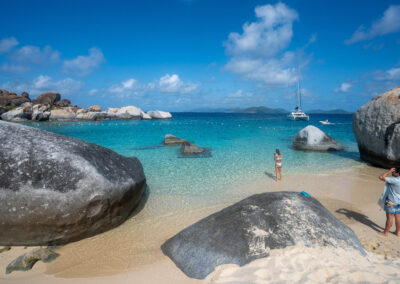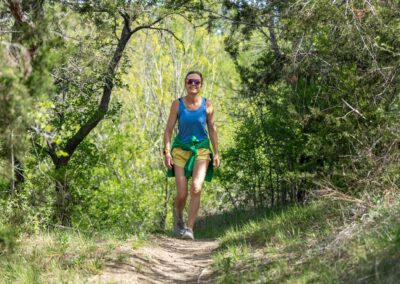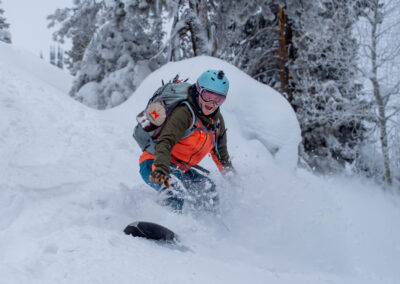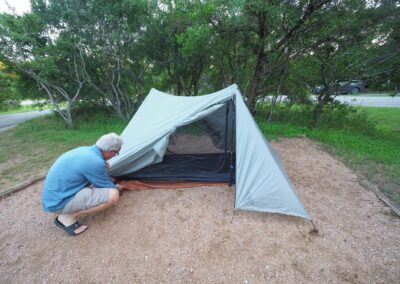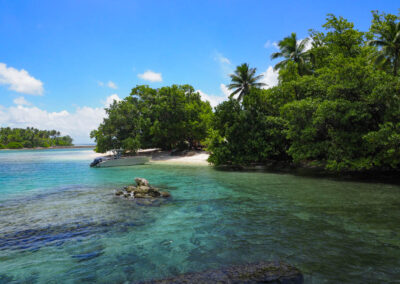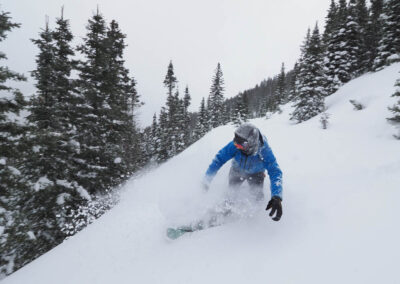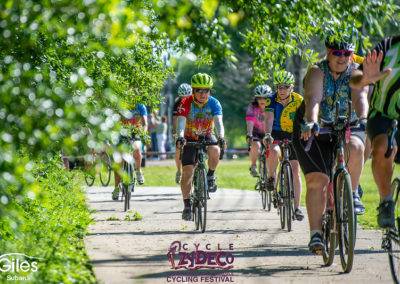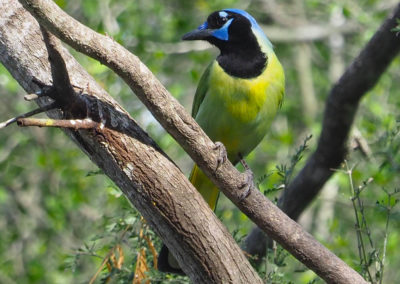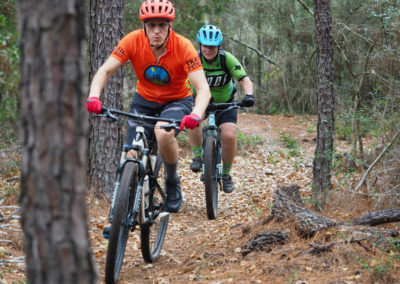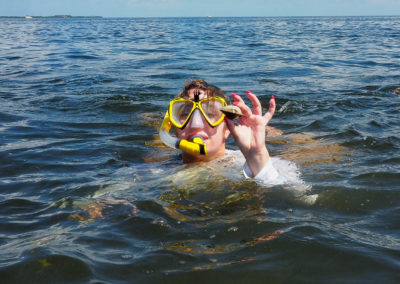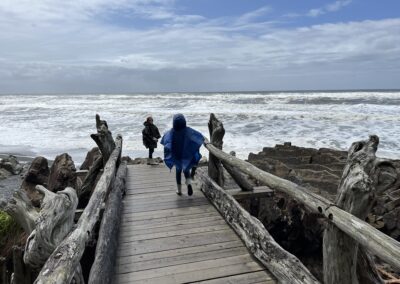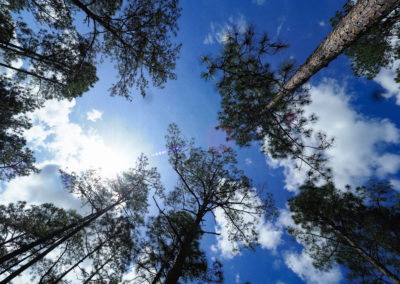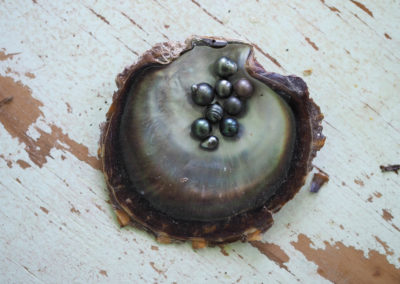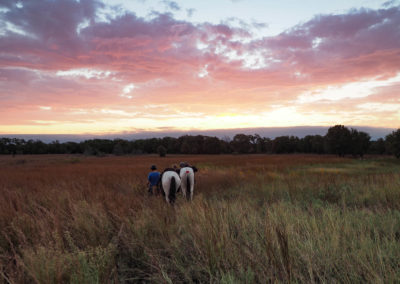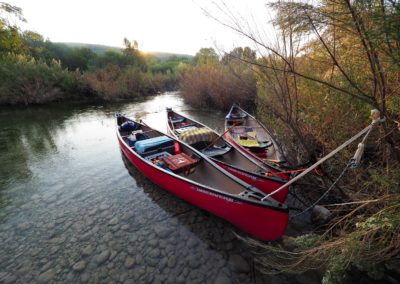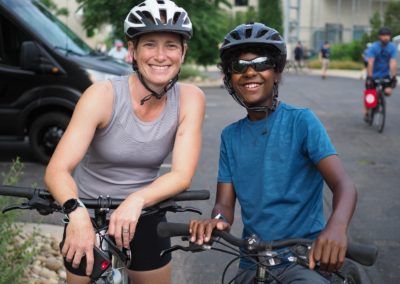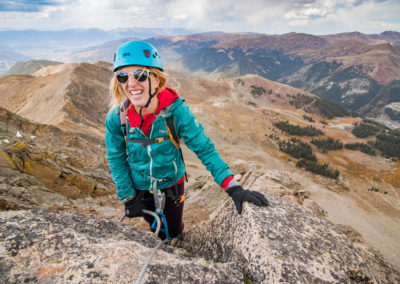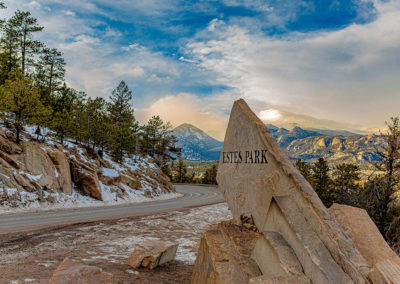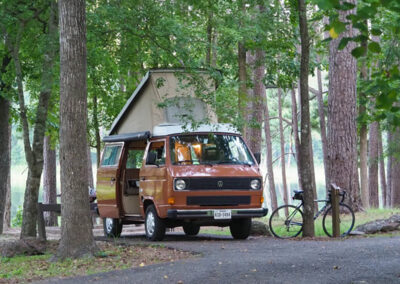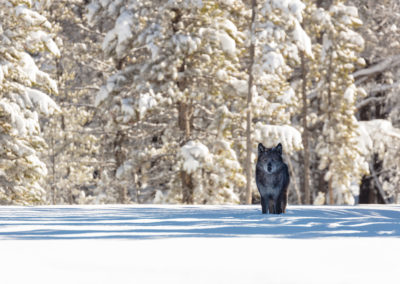
A group gears to go cat skiing during a snowstorm at Keystone Resort in Colorado in January 2022. Pam LeBlanc photo
My knees are clattering a little bit, and it’s not just from the temperature here in Keystone, Colorado, which is hovering around 6 degrees this morning.
Preston Burns, a guide at Keystone Adventure Tour, is testing the avalanche beacon strapped to my body. In a few minutes, I’ll be diving into deep powder, taking my first run into the off-piste heaven that looks to me like an ocean of frozen waves.
I’ve been skiing a few times a year for about 25 years and am comfortable on black (expert) runs. I also love dabbling in moguls, those hippo-sized mounds of snow that form on ski slopes, and weaving my way through the trees.

Nick Galvan pumps his fist after rolling through deep snow at the end of a run during a day of cat skiing. Pam LeBlanc photo
But the prospect of a day of cat skiing on expert-only terrain that’s not served by chairlifts has me doubting my abilities. We’ll be skiing inside the Keystone ski area boundaries, but in terrain where avalanches are a risk and hazards like steep drop-offs and hidden rocks exist.
“We want everyone to come back with a permanent smile on their face,” Burns had said earlier.
New lift may mean end of cat skiing at Keystone
Adrenaline junkies take note. The resort has offered these cat tours since 2004, but this might be the last season for them.

Guide Mike Currid blasts through powder during a day of cat skiing at Keystone Resort. Pam LeBlanc photo
Next year, there’s a new lift that will whisk riders up and into Bergman Bowl. That means anyone who wants to hit Bergman, Independence and Erickson bowls will no longer have to hike for 45 minutes to get there. But when they do, they’ll rarely find all the untracked powder that we’re finding today.
“Going forward we have no plans of continuing a similar (cat ski) product,” Burns says.
That’s good and bad, I think. Another lift means more space for people to spread out. But it also takes away the dare devil feeling of skiing hike-to terrain.
RELATED: Squeezing in Every Snowy Moment in Solitude

Skiers and boarders wear avalanche beacons and ski one at a time during a day of cat skiing at Keystone Resort. Pam LeBlanc photo
Staying safe while cat skiing
Our guides, Burns and Mike Currid, both members of the Keystone Ski Patrol and the Colorado Rapid Avalanche Deployment, briefed us on how to stay safe before we left the base this morning. This transmitter strapped to my body will give off a signal, so rescuers can find me in case I’m caught in an avalanche. We’ll also ski one at a time through avalanche terrain, to limit our exposure to sliding snow.
“My number one goal at end of the day is bringing everybody back safe,” Burns said, noting that no client has ever been caught in an avalanche. “Our jobs as guides are to be risk managers. We spend nearly the entire day in and around avalanche terrain and traveling through it. We need to make sure that everyone is searchable throughout the day and that never more than one person is exposed to avalanche danger at any one moment of time.”

A group of skiers traverses across a remote slope during a day of cat skiing at Keystone. Pam LeBlanc photo
We took a few chairlifts up the mountain this morning to the awaiting snowcat, an enclosed, truck-like vehicle designed to move on snow-covered mountain slopes. It looks like a tractor mashed up with a military tank. We clambered up retractable metal stairs and into the heated cabin.
Then we rumbled uphill for 20 minutes to Bergman Bowl, where I’m now about to get my first off-piste run of the day.
Where to go cat skiing in Colorado
Keystone’s not the only place in Colorado that offers cat skiing.
You can also take a cat skiing tour at Silverton, Monarch and Loveland, and outfitters offer guided trips in the backcountry near Vail, Steamboat, Crested Butte, Ski Cooper, and Jones Pass. Here, the cat skiing tour is open to advanced skiers who are comfortable riding black diamond terrain, deep powder, rocks, cornices, tree, and variable snow conditions. They get between eight and 12 runs, depending on the pace of the group and conditions.
RELATED: Go to Red Mountain for $10 Cat Skiing
We’re alone up here –– no gaggles of people or whirring chairlifts –– just a never-ending expanse of white.
We’ll be sandwiched between guides –– one in front, one sweeping up any wreckage in back. If we fall, we’re supposed to signal to the guides that we’re OK. We’ll try to lay our tracks close together, so we don’t groove up all the snow.
The guides point out places where the ski patrol has tossed explosives to trigger small snow slides. That helps prevent the risk of larger, skier-gobbling avalanches.
Time to cat ski

Loryn Roberson boards through deep powder during a day of cat skiing at Keystone Resort. Pam LeBlanc photo
I fasten my helmet and tug on my goggles. It’s snowing hard now, and I eyeball the steep slope before me. I shiver inside my jacket, then jump in.
The snow swirls around my knees. I hear the others cheer me on. It’s deep and fluffy, and completely different from skiing on a groomed slope. I make wide, swooping turns that make my quad muscles burn, but somehow manage to stay upright.
Behind me, the other skiers bound through the field of snow. One face plants. They’re all more graceful than me.
We break for a quick lunch, then head back up into Independence Bowl, my favorite. It’s crazy fun. I feel a little more comfortable as the hours tick past. Each run requires a little “transitional skiing” through sketchy patches to reach the pot of gold. But it’s worth it. I feel like I’m bounding from cloud to cloud as I ski down the slopes. Big poofs of snow rise behind me.
I’m grateful for the guides. It takes intimate knowledge of terrain to know where snow will end up based on wind direction leading up to the tour, and they’ve got it.
“That’s a big piece –– knowing where to go,” Burns says. “We can cater the trip toward whatever conditions are being given to us. We know based on wind direction where to take guests for the greatest experience.”
At one point, the cat drops us high above tree line, in a wide-open expanse of snow called Two if By Sea. We traverse across the slope in blowing snow, picking our way carefully. We’ve been skiing for nearly six hours, and my legs are shot. I tumble once on my run, happy but exhausted. When I get back to the cat, I sink into my seat.
Pace yourself
“Pace is really important,” Burns reminds me. “Listen to your body. If you want to take a lap off, awesome. There’s no pressure to take every single run. People get injured when their body tells them to pump the brakes, but they push on.”

Guests toast glasses of champagne and Sprite after a day of cat skiing at Keystone Resort. Photo by Pam LeBlanc
After eight solid runs, I take his advice. The others pile out for one final blast down the mountain, but I stay in the cozy cat. We meet up 20 minutes later, and ski down a groomed slope, back to the base.
There, it’s all whoops, hollers, and high fives. Burns pops open a bottle of champagne (and Sprite, for those who don’t drink), and we share a toast.
I’ve just put a wrap on my best day of skiing, ever.
If You Go

Getting there:
From Austin, fly to Denver, then make the two-hour drive to Keystone Resort.

Stay:
The Keystone Lodge and Spa is located on the shuttle route, and features an outdoor pool, a spa and several restaurants.
Do:
All-day cat skiing tours start at $475 per person and must be booked in advance. For information go here.
Eat & Drink
For dinner, try the Ski Tip Lodge, which offers a four-course gourmet meal in a log cabin that was once a stagecoach stop. For information go here.

Pro Tip:
Save the hassle of going to the ski rental shop by using one of the ski delivery services. Ski Butlers and Christy Sports, offer delivery to lodging properties in and around Keystone.










